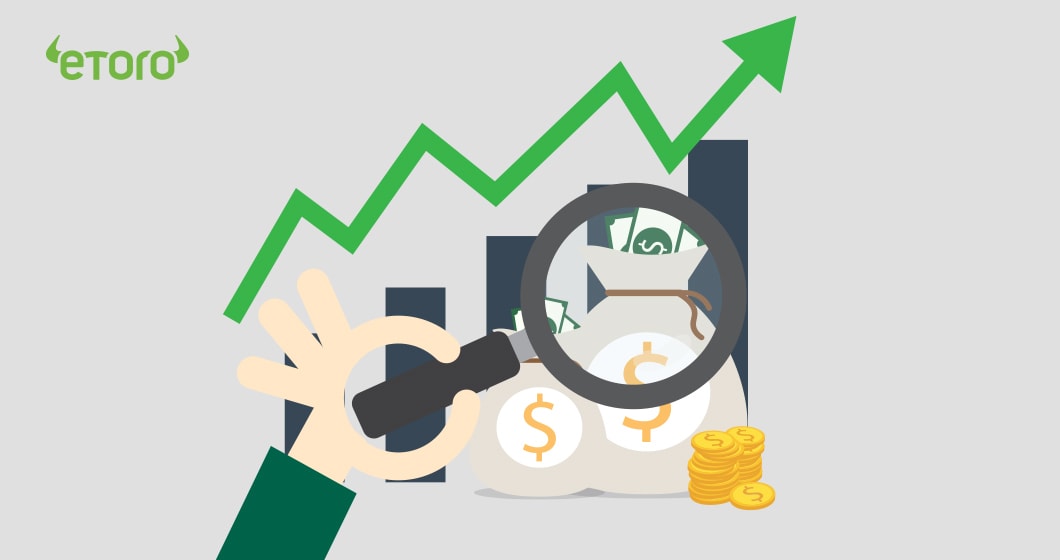Statistically speaking, it’s nearly impossible to time the markets right constantly. As we know, there are all kinds of market players, those that trade for short term gains and those who invest for long term profits, and then there’s everything in between. But what if there was a way that you could do both at the same time?
From my experience watching thousands of newcomers to the market, I can tell you that it’s usually the ones with a more long term outlook who perform best over time. Past performance is of course no guarantee of future returns, but it does seem there’s something to be learnt from those with an eye on the horizon. That’s not to say that there aren’t any really talented day-traders, in fact there are quite a few trading on eToro.
What I mean is that even if you are a short term trader, it is wise to have a long term outlook.
An example of this would be to think about your next 10 trades as one single strategy. Since nobody is able to predict the future 100% of the time, we need to assume that a few of them will end in a loss. So a savvy trader will only use a small amount of their total equity on each trade, ensuring that their entire balance will not be wiped out by any single action.

Of course, there are all kinds of variations on this but this isn’t what this article is about and is certainly not what was promised in the opening paragraph.
This strategy works especially well when you’re in touch with what’s happening in the markets in the short term but when the prediction you’re making is more long term in nature. For example if you think that a specific cryptocurrency will go up in the long term but it’s falling at the moment. Or, if there’s a specific stock that you like and that you feel will be much more valuable in 5 years time.
The veterans among you have probably discerned by now that we’re talking about a strategy known as “Dollar cost averaging” or “Pound cost averaging” for those of you in the UK.
Dollar cost averaging is a technique where you spread out your buy orders over a longer period depending on what’s happening in the market. The investor can then effectively buy more shares when prices are lower and less shares when prices are relatively higher.
The idea is simple to execute and can bring remarkable results. Let’s imagine that you have $100,000 in your portfolio and you want to allocate 10% of it to a specific market opportunity. Rather than opening a single position of $10,000 all at once, what you do is break up your purchases over several different days, or even weeks. So on the morning of the first day, you open a position for $200, then you don’t touch it until the next morning when you open up another $200, and so on and so forth until all the funds are allocated.
Here’s the fun part…. By staying in touch with the short term movements you should get a good idea about how much money you’ll want to allocate each day. After the market takes a big hit, you might want to open a position of $500 rather than the usual $200, in order to take advantage of the lower price. Similarly and conversely, if the price has just surged, you may want to take a smaller position that day.
Remember, the way to make good money in the markets is to buy low and sell high but because high and low are relative terms, you’re going to need to game the odds just a bit in order to come out consistently ahead.
Hope this was helpful. Let me know if you have any further questions or if you need some more assistance with your personal portfolio.
Mati Greenspan,
eToro, Senior Market Analyst
This content is provided for information and educational purposes only and should not be considered to be investment advice or recommendation.
Past performance is not an indication of future results. All trading involves risk; only risk capital you are prepared to lose.
The outlook presented is a personal opinion of the analyst and does not represent an official position of eToro.
eToro is a multi-asset platform which offers both investing in stocks and cryptocurrencies, as well as trading CFD assets.
Please note that CFDs are complex instruments and come with a high risk of losing money rapidly due to leverage. 65% of retail investor accounts lose money when trading CFDs with this provider. You should consider whether you understand how CFDs work, and whether you can afford to take the high risk of losing your money.
Cryptocurrencies can widely fluctuate in prices and are not appropriate for all investors. Trading cryptocurrencies is not supervised by any EU regulatory framework.

